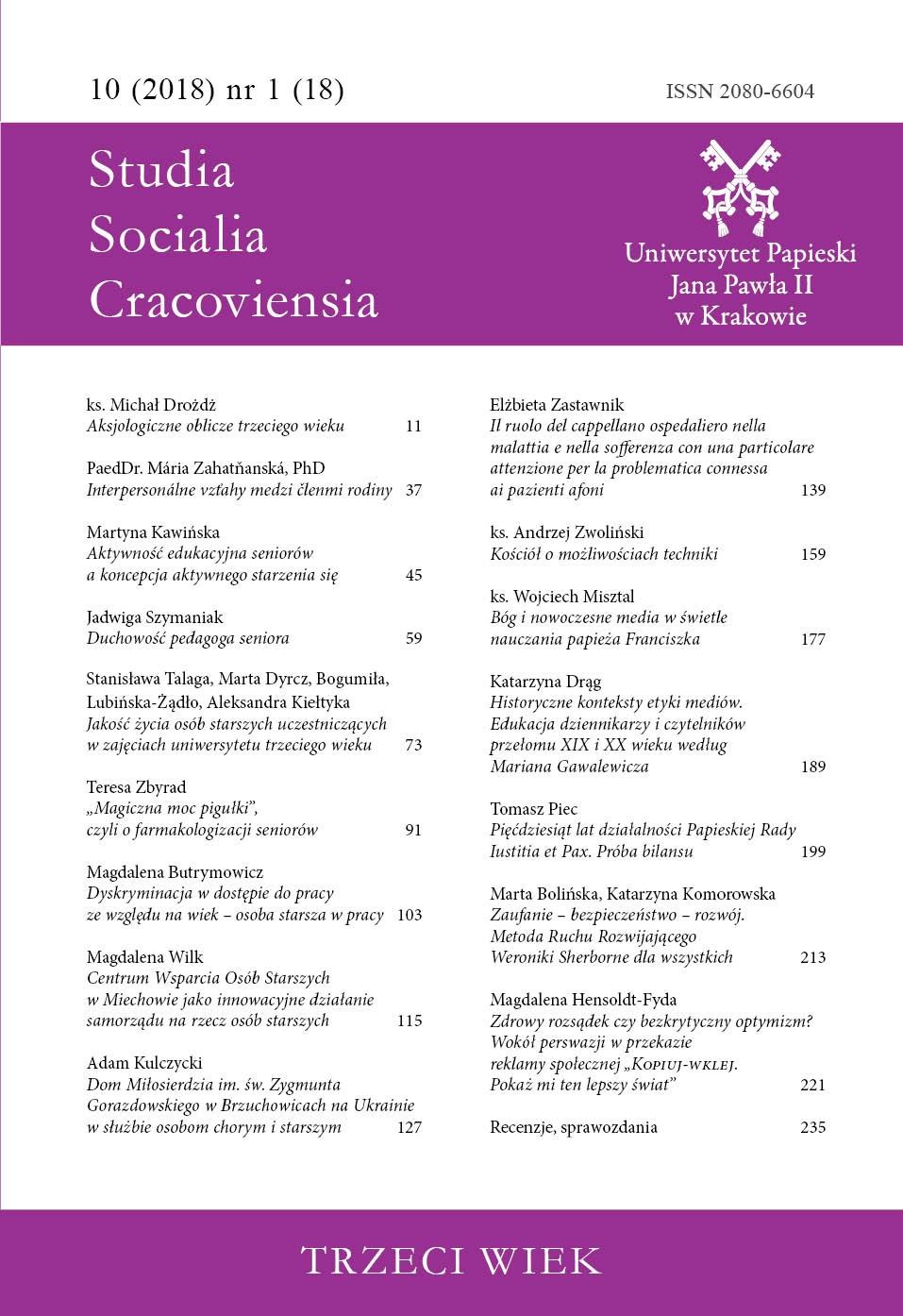Common sense or uncritical optimism? Around persuasion in the transmission of social advertising „Copy-paste. Show me the better world”
DOI:
https://doi.org/10.15633/ssc.2608Keywords:
social advertising, trust, social trust, persuasion, recipient’s actions, emotional argumentationAbstract
Common sense or uncritical optimism? Around persuasion in the transmission of social advertising „Copy-paste. Show me the better world”. The aim of the article is to answer whether the means of persuasion in social advertising are to inspire confidence in consumers or, on the contrary, to create caution. Is the recipient of common sense persuasive, or does he or she uncritically trust the content delivered through persuasion? Social advertising is intended to arouse emotions in the audience, release their empathy, create attitudes, and indicate patterns of behavior. “Social persuasion”, in terms of the attitudes and behavior patterns will be analyzed in the social advertising titled “COPY-PASTE. Show me the better world” which refers to the models present in families that will later transform into the adult life of the children. This is an interesting research material because it presents two extremely different life situations that each of us knows very well and rarely talk about. Communication in the family and the domestic violence, especially against children, is still a taboo topic.References
Bogunia-Borowska M., Reklama jako tworzenie rzeczywistości społecznej, Kraków 2004.
Böhner G., Wänke M., Postawy i zmiana postaw, przekł. J. Radzicki, Gdańsk 2004.
Centrum Badania Opinii Społecznej, Zaufanie społeczne, „Komunikat z Badań” nr 18/2016, s. 2–20.
Doliński D., Psychologiczne mechanizmy reklamy, Sopot 2003.
Frykowski M., Zaufanie społeczne mieszkańców Łodzi, Łódź 2005.
Gajlewicz M., Techniki perswazyjne. Podstawy, Warszawa 2009.
Goban-Klas T., Media i komunikowanie masowe. Teorie i analiza prasy, radia, telewizji i Internetu, Warszawa 2009.
Harwas-Napierała B., Komunikacja w rodzinie ujmowana jako system w relacji rodzice–dzieci, „Obrazy Życia Rodzinnego z Perspektywy Interdyscyplinarnej. Roczniki Socjologii Rodziny” XVII/2006, s. 221–233.
http://kampaniespoleczne.pl/ (20.05.2017).
Inny słownik języka polskiego, t. 2, red. M. Bańko, Warszawa 2000.
Jachnis A., Terelak J. F., Psychologia konsumenta reklamy, Bydgoszcz 1998.
Jarosz E., Kurkowski C., Przemoc w wychowaniu w świetle opinii społecznej oraz relacji rodziców” – zarys problemu na tle monitoringu Rzecznika Praw Dziecka, „Problemy Wczesnej Edukacji” 4 (31)/2015, s. 151–159.
Kampania społeczna „KOPIUJ-WKLEJ. Pokaż mi ten lepszy świat” (teledysk), https://www.youtube.com/watch?v=ypvGDNJv1uo&t=2s (20.05.2017).
Korolko M., Sztuka retoryki, Warszawa 1990.
Kotler P., Armstrong G., Principles of Marketing, Prentice Hall, Inc. 5th ed. Englewood Cliffs, New York 1991.
Perswazja, w: Słownik Języka Polskiego on-line, https://sjp.pl/perswazja (19.05.2017).
Pirus A., Znaki na sprzedaż. W stronę integracyjnej teorii reklamy, Kraków 2005.
Pratkanis A., Aronson E., Wiek propagandy, przeł. J. Radzicki, M. Szuster, Warszawa 2003.
Propaganda dobrych serc, czyli rzecz o reklamie społecznej, red. D. Maison, P. Wasilewski, Kraków 2008.
Putman R., Demokracja w działaniu: tradycje obywatelskie we współczesnych Włoszech, Kraków 1995.
Reeves B., Nass C., Media i ludzie, przeł. H. Szczerkowska, Warszawa 2000.
Rodzinne kopiowanie i wklejanie, w: http://kampaniespoleczne.pl/rodzinne-kopiowanie-i-wklejanie/ (20.05.2017).
Shubina I., Reklama społeczna a komunikat perswazyjny, „Media – Kultura – Społeczeństwo” (2010) 5, s. 187–199.
Sztompka P., Socjologia. Analiza społeczeństwa, Kraków 2012.
Sztompka P., Zaufanie. Fundament społeczeństwa, Kraków 2007.
Toscani O., Reklama; uśmiechnięte ścierwo, tłum. M. Misiorny, Warszawa 1997.
Zwoliński A., Słowo w relacjach społecznych, Kraków 2003.
Ziółkowski M., Wiedza, jednostka, społeczeństwo, Warszawa 1989.
Downloads
Published
Issue
Section
License
Authors who publish with this journal agree to the following terms:
- Authors retain the copyright and full publishing rights without restrictions, and grant the journal right of first publication with the work simultaneously licensed under a Creative Commons Attribution 4.0 International License that allows others to share the work with an acknowledgement of the work's authorship and initial publication in this journal.
- Authors are able to enter into separate, additional contractual arrangements for the non-exclusive distribution of the journal's published version of the work (e.g., post it to an institutional repository or publish it in a book), with an acknowledgement of its initial publication in this journal.
- Authors are permitted and encouraged to post their work online (e.g., in institutional repositories or on their website) prior to and during the submission process, as it can lead to productive exchanges, as well as earlier and greater citation of published work (See The Effect of Open Access).

